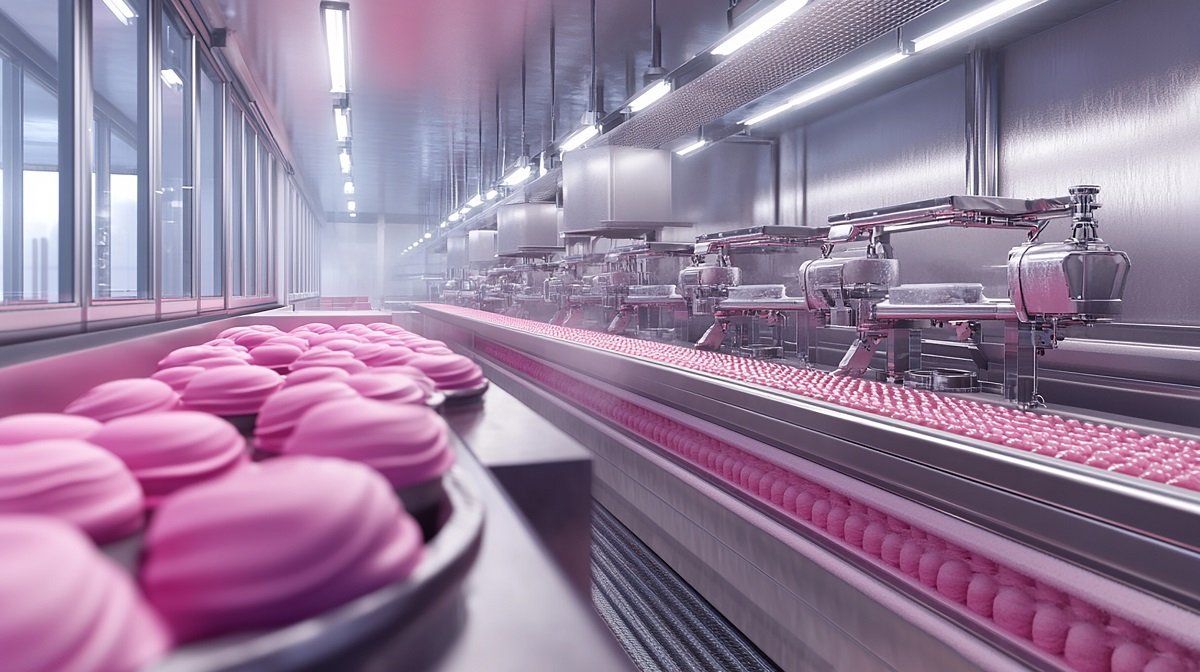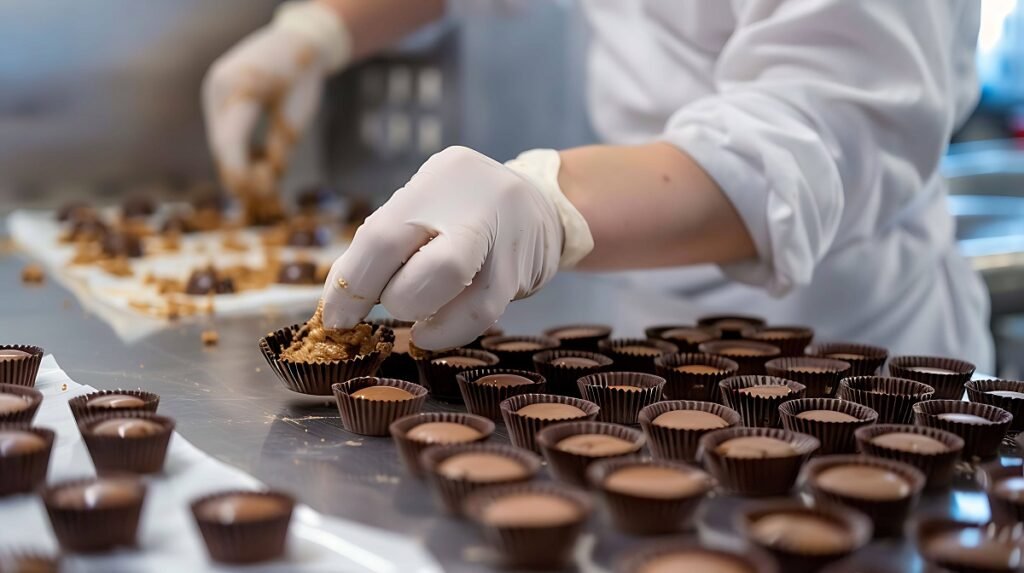
Step-by-Step Overview of Industrial Dessert Production Techniques
- James Jeorge
- September 11, 2024
- Food
- Industrial Dessert Production
- 0 Comments
Introduction
Definition of Industrial Dessert Production
Industrial Dessert Production refers to the large-scale manufacturing of sweet treats using advanced machinery, streamlined processes, and stringent quality control. This method is designed to meet the high demand for desserts in global markets while maintaining consistency, efficiency, and safety.
Relevance in Today’s Food Industry
As consumer demand for desserts grows, the need for mass-production methods has never been more vital. Industrial dessert production is critical in supplying supermarkets, restaurants, and cafes with various cakes, pastries, ice creams, and more.
Overview of the Blog’s Structure
This article provides a comprehensive step-by-step overview of the entire process of industrial dessert production, from raw material selection to the final packaging and distribution stages.
Raw Material Selection
Importance of Ingredient Quality
The foundation of any great dessert lies in the ingredients. In industrial dessert production, high-quality raw materials ensure that the final product tastes good and has the desired texture and shelf life.
Common Ingredients Used in Industrial Dessert Production
Key ingredients often include flour, sugar, butter, cream, eggs, chocolate, flavorings, and preservatives. Large-scale producers may source these ingredients from suppliers worldwide, making it essential to ensure consistency.
Ingredient Sourcing Challenges
Industrial dessert manufacturers must navigate challenges such as fluctuating costs, global supply chain issues, and the availability of organic or sustainable ingredients.
Preparation Techniques in Industrial Dessert Production
Mixing and Blending
Mixing and blending are the first critical steps in dessert preparation. Industrial mixers are designed to handle vast quantities of ingredients, ensuring that each batch is homogenous.
Emulsification and Stabilisation
Proper emulsification ensures a smooth texture for desserts like ice cream. Stabilizers, like gelatin or agar, may be added to enhance consistency and prevent separation.
Temperature Control in the Preparation Phase
Precise temperature control is necessary to maintain the desired texture of ingredients during preparation. Industrial equipment often has built-in temperature regulation systems to optimize the process.

Automated Machinery and Technology
Types of Equipment Used in Dessert Manufacturing
Industrial dessert production relies heavily on automated mixers, ovens, cooling tunnels, and packaging systems. Each piece of equipment is designed to maximize efficiency and maintain quality.
Automation vs Manual Production
Automation has reduced the need for manual labor, increasing production speed. However, manual oversight is required to ensure everything runs smoothly and meets quality standards.
Advances in Dessert Production Machinery
Robotics, AI, and machine learning are revolutionizing industrial dessert production. Machines can adjust settings based on real-time data for optimal results.
Formulation and Recipe Development
Developing Consistent Dessert Recipes
Formulating recipes at an industrial scale involves trial and error to achieve the perfect balance of flavor, texture, and stability. Recipes must be scalable and adaptable to the large quantities involved.
Balancing Flavors and Textures
Industrial dessert production requires a fine-tuned balance of sweetness, acidity, and texture. Consistency across batches is crucial for maintaining customer satisfaction.
Nutritional Considerations in Industrial Dessert Production
Many producers now prioritize health-conscious alternatives, reducing sugar and fat content while maintaining taste, to meet the growing demand for healthier options.
Baking, Freezing, and Cooling Processes
Time and Temperature in Baking
Industrial baking processes rely on precise temperature and timing to ensure consistent results. Variations in these parameters can significantly affect the final product’s quality.
Cooling Techniques to Maintain Product Integrity
Rapid cooling is essential to lock in the freshness of baked goods. Cooling tunnels are used in industrial dessert production to bring products to optimal temperatures without compromising texture.
Impact of Freezing on Dessert Texture and Quality
For frozen desserts like ice cream, freezing must be done quickly and at the right temperature to avoid large ice crystal formation, which can negatively affect texture.
Quality Control and Testing
Standardised Quality Control Procedures
Ensuring consistent quality is a priority in industrial dessert production. Quality control checks include assessments of weight, texture, taste, and appearance.
Role of Sensory Testing
Before a product reaches the consumer, sensory testing evaluates flavor, mouthfeel, and aroma. This ensures that each dessert meets the brand’s standards.
Ensuring Compliance with Food Safety Standards
Industrial dessert production is governed by strict food safety regulations. Manufacturers must comply with local and international standards to avoid contamination and maintain consumer trust.
Packaging and Storage
Packaging Materials Suitable for Desserts
Choosing a suitable packaging material is essential for preserving dessert quality. Options include plastic, foil, and biodegradable packaging, each serving specific product needs.
Extending Shelf Life in Industrial Dessert Production
To extend shelf life, industrial dessert producers often use vacuum sealing or gas flushing to prevent oxidation and spoilage.
Proper Storage Conditions for Preserving Quality
Once packaged, desserts must be stored in temperature-controlled environments to remain fresh until they reach consumers.
Logistics and Distribution
Transportation Challenges in Dessert Distribution
Shipping desserts, especially frozen or temperature-sensitive ones, poses logistical challenges. Maintaining freshness requires careful planning and execution.
Maintaining Freshness During Distribution
The cold chain must be maintained throughout transportation to preserve the integrity of temperature-sensitive desserts.
Cold Chain Logistics for Temperature-Sensitive Products
Industrial dessert production companies rely on refrigerated vehicles and storage facilities to ensure products are delivered in perfect condition.

Future Trends in Industrial Dessert Production
Sustainable Production Practices
As sustainability becomes critical, industrial dessert producers seek eco-friendly ingredients and packaging options.
Innovations in Ingredients and Recipes
The future of dessert production may see the rise of plant-based ingredients, artificial sweeteners, and novel textures, all created to meet changing consumer demands.
Integration of AI and Machine Learning in Dessert Manufacturing
AI is increasingly used to monitor real-time production processes, predict equipment failures and optimize recipe formulations.
Conclusion
Industrial Dessert Production has become a highly efficient and advanced process, leveraging technology and innovative practices to meet the ever-growing global demand for sweet treats. Each step, from ingredient selection to packaging, is designed to ensure quality, consistency, and safety, while future trends point towards even more exciting developments in the industry.
Read Also:How to Look and Feel Younger




